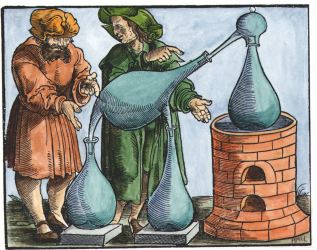| Author | Post |
|---|
adammclean
Member

| Joined: | Fri Sep 14th, 2007 |
| Location: | United Kingdom |
| Posts: | 606 |
| Status: |
Offline
|
|
Posted: Wed Feb 22nd, 2012 11:05 am |
|
| Engraving from work of Athanasius Kircher, 17th century. Attached Image (viewed 2823 times):
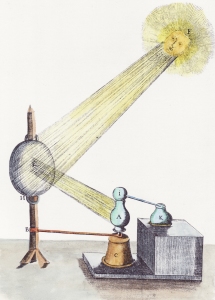
|
adammclean
Member

| Joined: | Fri Sep 14th, 2007 |
| Location: | United Kingdom |
| Posts: | 606 |
| Status: |
Offline
|
|
Posted: Wed Feb 22nd, 2012 02:23 pm |
|
Image from Fludd Amphitheatrum
Attached Image (viewed 2446 times):
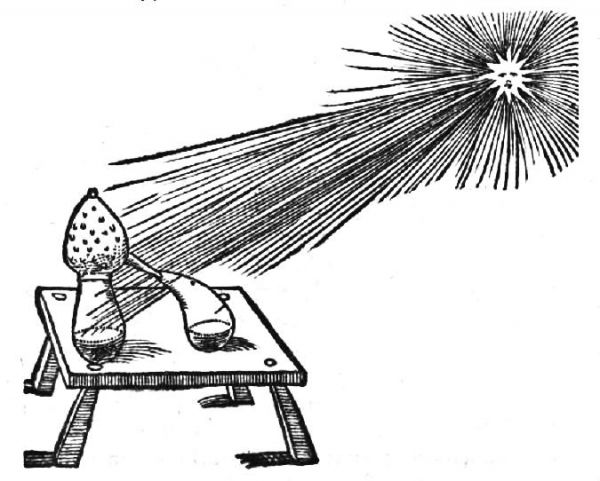
|
adammclean
Member

| Joined: | Fri Sep 14th, 2007 |
| Location: | United Kingdom |
| Posts: | 606 |
| Status: |
Offline
|
|
Posted: Wed Feb 22nd, 2012 02:25 pm |
|
Image from Fludd Philosophia Sacra
Attached Image (viewed 2540 times):
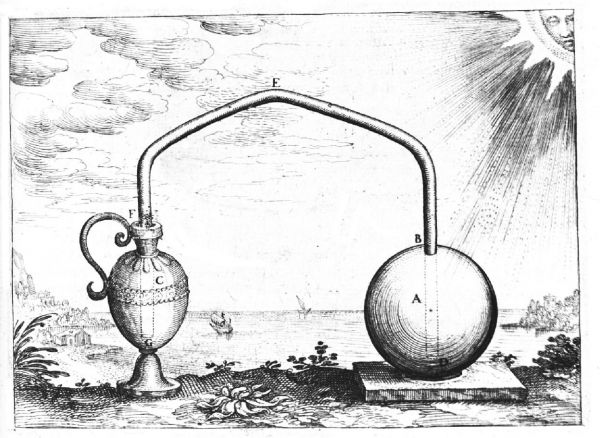 Last edited on Wed Feb 22nd, 2012 02:26 pm by adammclean
|
adammclean
Member

| Joined: | Fri Sep 14th, 2007 |
| Location: | United Kingdom |
| Posts: | 606 |
| Status: |
Offline
|
|
Posted: Wed Feb 22nd, 2012 02:31 pm |
|
Related images from Fludd's Optics in Utriusque cosmi historia..
Attached Image (viewed 2832 times):
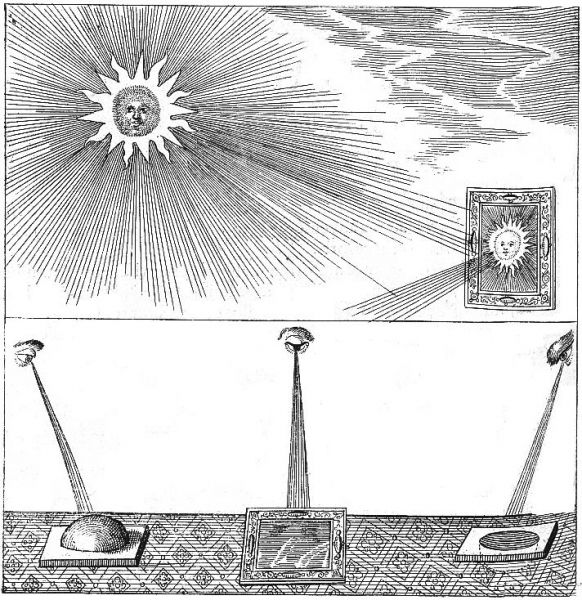 Last edited on Wed Feb 22nd, 2012 02:32 pm by adammclean
|
adammclean
Member

| Joined: | Fri Sep 14th, 2007 |
| Location: | United Kingdom |
| Posts: | 606 |
| Status: |
Offline
|
|
Posted: Wed Feb 22nd, 2012 02:33 pm |
|
| Another from Fludd's Optics in Utriusque cosmi historia.. Attached Image (viewed 2734 times):
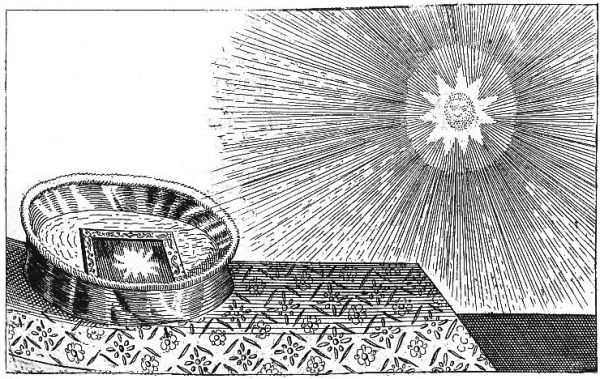
|
Paul Ferguson
Member

| Joined: | Fri Feb 15th, 2008 |
| Location: | |
| Posts: | 1538 |
| Status: |
Offline
|
|
Posted: Wed Feb 22nd, 2012 03:58 pm |
|
This is the frontispiece from the "Oculum hoc est: fundamentum opticum..." of the Jesuit astronomer Christoph Scheiner, printed in Innsbruck in 1619.
To me it has a distinct alchemical feel to it, or am I reading too much into it?Attached Image (viewed 2738 times):

|
Richard Ashrowan
Member
|
Posted: Wed Feb 22nd, 2012 08:45 pm |
|
There are several images here that I have not in fact seen before - many thanks. And thank you all also for the very helpful posts, which have opened out some lines of enquiry that will take some time to follow through.
I wanted to ask if anyone has any idea quite what is going on in the attached catoptrical image from Athansius Kircher Ars Magna Lucis et Umbrae 1664, p 889.
It seems distinctly alchemical. I have transcribed the Latin from the page that describes this catoptrical device here, but I personally cannot make much sense of it. Is anyone here fluent enough with Latin to offer up the general sense of it?
Here's the page transcript:
*****************
Magia Catoptrica
Problema V
Statuam construere, que ad or tum Solis, et singulis horis consequentibus, Sole percussa prodigiosum sinum excitet.
Vide fig. 3 Iconismi 31.
De hisce statuis fuse tractabitur in Mechanica nostra Hieroglyphica, quare hoc loco fabricum statue tantum obiter at paucis describemus, ne quidquam curiosarum rerum in hac Arte nostra Magna omisisse videamur.
Fiat cista quaedam ex plumbo, vel alio quouis metallo fignata literis ABCDEF, vt 3. Figura docet, quatuor palmorum longitudinis; latitudinis altitudis que palmi vnius. In hac ¼ pars BEFJ, diaphragmate ELB dirimatur, per quod siphon ELB, inflexus ducatur. Huic vasi statua Memnonia eo habitu, et situ qua figura MP refert, imponatur. Porro ex huius vasis interiori superioris lateris superficie tres deducantut syphones ; B in corpus colucris Z, alter sistulam MN referat. Syphon tertius sit OP, qui per corpus flatuae deducatur in os, et oculos. Vas vero ADLE, suo affario platismatioque 1 instructum sit, cuius pes per fundum vasis in aquam viuam deducatur; vas autem ita sit vndique claufum, vt ne minimum quidem aeris exhalere posit; in vasis superiorilatere duo hemisphaeria G, et H, imponantur, quorum concaus, cum concauo vasis ABKL, cotinuenture. His rite peractis, ita machinum animabis; Machina prius ad tertiam partem replete humore, expones Soli, quae mox vbi radios senserit, in hemisphearia G, et H illapsos, vehementer interiorem aerem rarefaciet, hic consequenter aqua premet, quae pressa, cum aliunde non posit, per E syphonem inflexum sese insinuabit in vas N, ibique latentem aerem fumma viper B,O,N, syphones expellent, atque in Z quidem volucris fibilum, in M sonum animalis, in P vero et oculos mouebit factitios, et ad minitandum aptos, industriose in ertos, lingua quoque inflatum extra os prottudet, mirum dictu spectaculum. Porro Sole recedente aer in vase AB condensatus cum minorem locum requirat, in auxilium nouam aquam per affarium I attractam aduocabir, quem in recedentis locum substituat, aqua vero vasis N, per epistomium I. vacuata, nona parabit spectacula.
Si itaque huiusmodi prodigiosum sonum singulis horis exhibere veils: Machina in centro X figurae II. ita applicabitur, vt vtrumuis G, vel H, hemisphaerium X centro respondeat, et Sol globulos horatios crystallinos transiens singulis horis, ardenti foco suo G, vel H, in momento calefaciet, quam calefactionem necessario quoque intensus sonantis statuae effectus consequetur. Sole vero a globulo crystallino recedente, c effante que; et sic duodecies statua de die sonabit, et quasi praeconem horarium; fumma audientum admiratione aget; critique hoc spectaculum perpetum. Verum qua ratione huic machinae cocem humanae proximum, indere possimus, alibi susius declarabitur; vnde, qua ratione Solis luce haec machina animari posit, hic obiter tantum insinuasse sufficiat.
*****************Attached Image (viewed 2738 times):
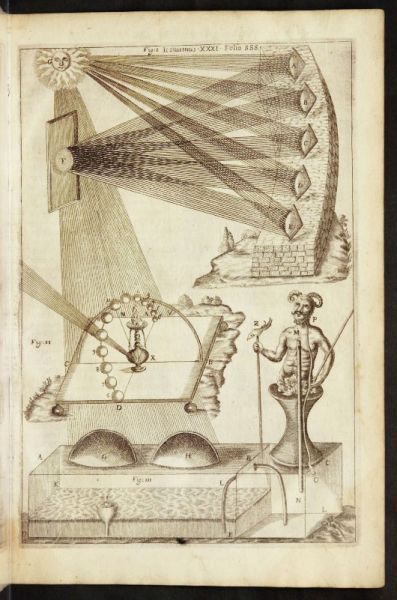
|
Carl Lavoie
Member
| Joined: | Wed Feb 25th, 2009 |
| Location: | Canada |
| Posts: | 215 |
| Status: |
Offline
|
|
Posted: Wed Feb 22nd, 2012 09:15 pm |
|
.
I came upon this :
Taking our celestial power, i.e., by using the Niter, placed in a wide shallow glass container and set in front of our apparatus containing the magical Fire, and allowing the material to be calcined by the rays of astral radiation, so that the universal, solar essence will be carefully absorbed [...]
Then pour it on a flask and distill it over, which is easily carried out by our" Magical Machine" [magnifying lens] with "reverse distillation fire", which causes the material to be distilled over to the last drop and will no longer remain in the form in which it had been.[...]
Just as we, through the miracle of faith in God and reliance on His love, are able to accomplish many wonderful things, and are able to overcome all obstacles, so, too, are we able, through the Holy permissive Will of God, perform our magic and prepare our natural fire by means of the apparatus that we have just now introduced to this world in order to conquer it by the highest degree of completeness and perfection which we are able to accomplish, which would have been impossible without our having received the idea of the "natural fire" to help us. Especially since the value of such a natural phenomenon could require a thousand or more years to be adequately demonstrated and further developed, had its worth not been displayed through the knowledge of our apparatus.
Recall now, and cite it yourself, whether you or anyone else has at anytime heard or seen how ice, talc, pearls and plumed objects (especially since a very strong "materialistic fire" can always be produced) can be brought into a tree flow or to be melted, without putting over a fire. As you should know --- and no words of praise are necessary here --- that it is reasonable to have this property, that is, to possess our "natural fire", apart from which all this would be impossible, as we will show by subsequent demonstrations. We will now take, as an example to prove a point, a few valuable oriental pearls and place them in an open glass dish in front of our apparatus, so that the pearls will lie in the "magic natural fire", with its focus at the center of the dish.
But I'm not familiar with this text, supposedly the :
(Anon.; J. Arndt's Das zweyte Silentium Dei Weisen paradiesseschen Lustgarten?) ARCANA DIVINA.
Published by Dr. G. A. Fuchs in Collected Volumes 1885-1916 of the Provincial Library (Vol. 8, History of Literature, p. 417), and in the Annual Report of the Communal College of Komotau (Bohemia). from a Manuscript from the Ossegg Foundation.
http://www.rexresearch.com/alchemy3/arcdivin.htm
.
Last edited on Wed Feb 22nd, 2012 09:24 pm by Carl Lavoie
|
Carl Lavoie
Member
| Joined: | Wed Feb 25th, 2009 |
| Location: | Canada |
| Posts: | 215 |
| Status: |
Offline
|
|
Posted: Wed Feb 22nd, 2012 09:22 pm |
|
| Not sure of the source of this. I'll try to find it. Attached Image (viewed 2172 times):
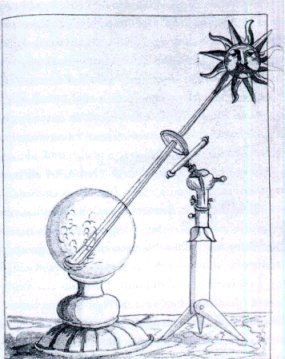
|
adammclean
Member

| Joined: | Fri Sep 14th, 2007 |
| Location: | United Kingdom |
| Posts: | 606 |
| Status: |
Offline
|
|
Posted: Wed Feb 22nd, 2012 09:26 pm |
|
Paul Ferguson wrote: This is the frontispiece from the "Oculum hoc est: fundamentum opticum..." of the Jesuit astronomer Christoph Scheiner, printed in Innsbruck in 1619.
To me it has a distinct alchemical feel to it, or am I reading too much into it?
It seems to be more about tracing the geometry of light rays to the eye, and through lenses. Although he has the clear idea of the camera obscura, I am not sure if he broke through to the modern conception of the eye as a camera.
|
Paul Ferguson
Member

| Joined: | Fri Feb 15th, 2008 |
| Location: | |
| Posts: | 1538 |
| Status: |
Offline
|
|
Posted: Thu Feb 23rd, 2012 11:15 am |
|
Richard Ashrowan wrote:
I wanted to ask if anyone has any idea quite what is going on in the attached catoptrical image from Athansius Kircher Ars Magna Lucis et Umbrae 1664, p 889.
It seems distinctly alchemical. I have transcribed the Latin from the page that describes this catoptrical device here, but I personally cannot make much sense of it. Is anyone here fluent enough with Latin to offer up the general sense of it?
Well here's my best effort in a rather chaotic working-week.
Nothing to do with alchemy but great fun even so 
Catoptric Magic.
Problem V.
To construct a statue which makes an impressive sound at sunrise and at each individual hour thereafter when the Sun's rays alight upon it (see fig. 3 of illustration-sheet 31).
The subject of these statues will be dealt with at greater length in our work “Mechanica Hieroglyphica.” Here we shall content ourselves with describing the construction of the statue in a few words, as we do not wish to appear to have omitted any curiosities from the present work, which is after all our “Ars Magna.”
Let a box be constructed of lead or of any other metal as indicated by the letters ABCDEF, as shown in fig. 3. This box should be four spans [1 span = approx. 4 inches] in length, and one span in both width and height. In this box a quarter-part as indicated by the letters BEFL should be separated by a partition ELB, through which a curved siphon ELB [sic] should be introduced. Onto this apparatus the Memnonian statue [http://egyptsites.wordpress.com/2009/02/10/the-colossi-of-memnon/] in its usual garb and stance should be placed as shown in fig. MP. From the interior surface of the upper side of this apparatus three siphons should be drawn out: B, which leads into the winged[?] body Z; a second siphon carrying back the pipe MN; and a third siphon OP, which is drawn through the body of the statue to the mouth and eyes. The vessel ADLE should be fitted out with its assarium valve [ http://books.google.com/books?id=l9qBdzRz6SgC&pg=PA77&lpg=PA77&dq=assarium&source=bl&ots=TI5je2k_1b&sig=U0weA37tTB_8TuikDFZHmMADke8&hl=en&sa=X&ei=FBVGT-HyK8qp8AOP-cSTDg&ved=0CEgQ6AEwBQ#v=onepage&q=assarium&f=false]and its platismatio [small lateral door?] I, the foot of which should be drawn through the bottom of the vessel into some aqua viva. This construction ensures that the vessel is completely sealed, so that the least amount of air can escape. In the upper surface of the apparatus there should be placed two hemispheres G and H, the concavities of which should be continuous with the concavity of vessel ABKL.
After you have performed this procedure correctly, set the Machine to work as follows. Expose the Machine, which has previously been one-third filled, to the Sun. This will soon powerfully rarify the air inside the Machine when its rays alight upon the Machine's hemispheres G and H. This brings the water under pressure. The pressurised water, since it has nowhere to escape to, will infiltrate curved siphon E and pass into vessel N, where it will expel the latent air with the greatest force through siphons B, O and N and cause in Z a rapid hissing noise, and in M an animal-like sound, and in P will move the artificial eyes and, if they have been carefully inserted, will make them able to inspire fear. It will also cause the tongue to protrude from the mouth – a truly wonderful sight! Then, as the Sun recedes, the air in vessel AB, which will be condensed since it will now require less space, will call upon the services of some new water, drawn through assarium valve I, which will take the place of the receding water. The water evacuated through stopper L will produce new [typo for 'nova'?] marvels.
If you want to produce an impressive sound of this kind at the individual hours then the Machine should be so deployed in the centre X of fig. II that either hemisphere G or H will respond to X in the centre, and the Sun, passing over at the individual hours the crystalline globules which mark the time will, with its burning focus, heat up G or H at that moment, which heating of necessity will cause the statue to produce intense sound-effects. As the Sun recedes from each crystalline globule, and the heat is correspondingly reduced, the effects mentioned will also cease, until the Sun illuminates another globule, and so twelve times a day the statue will resound and will serve as a sort of Herald of the Hours. It will perform its various tricks to the greatest admiration of those who hear it and will be a perpetual marvel.
By the same mechanism we can actually endow the Machine with a voice similar to that of a human being, a subject which will be described at length elsewhere. And so, by this mechanism this machine can be activated by the Sun's rays, and this shall suffice as an incidental account of the subject.
|
Richard Ashrowan
Member
|
Posted: Thu Feb 23rd, 2012 12:18 pm |
|
| Paul - our dear Mr Kircher certainly liked his toys. Many thanks for the excellent translation... as you say, it is a very funny device indeed!
|
Richard Ashrowan
Member
|
Posted: Thu Feb 23rd, 2012 01:27 pm |
|
Carl Lavoie wrote:
Not sure of the source of this. I'll try to find it.
Seems to come from this site:
http://herve.delboy.perso.sfr.fr/niepce_chevreul.html
Credited to "mss. M79.2 BPH Amsterdam" which I can't find - I assume it must be from the Amsterdam BPH Ritman Library - I have emailed them to find out.
I have attached another image I haven't seen before, from the same website, also only credited to an 'alchemical manuscript' BPH, Amsterdam. I understand the BPH/Ritman has recently reopened after a year of closure.Attached Image (viewed 2393 times):
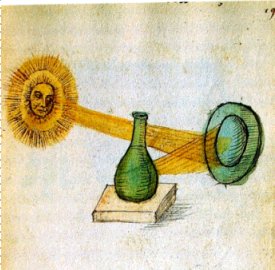
|
Richard Ashrowan
Member
|
Posted: Fri Feb 24th, 2012 04:10 pm |
|
adammclean wrote:
I assume you have the common examples of this.
Here is one from Le Faivre
Adam - have you a bibliographical reference for this image and it's english translation version?
|
Richard Ashrowan
Member
|
Posted: Wed Feb 29th, 2012 12:14 pm |
|
Richard Ashrowan wrote:
Carl Lavoie wrote:
Not sure of the source of this. I'll try to find it.
I now have some further information on this image - it is no longer at the Ritman Library, but at the KB, National Library of the Netherlands, shelfmark "BPH 209 a - b (212)".
Here is what a librarian at KB has to say about it. Can anyone translate the latin? Or offer any other perspective on the possible origin of this manuscript. It would be a help:
*********
It is an 18th century manucript in two volumes. No author is known.
Part II ( "BPH 209-b (212)") contains between the (in ink numbered)
pages 65 to 69 several illustrations with a preceding 'titlepage' on which is written in Latin: "Chemia Symbolica / Spectans / Ad sequens
manuscriptum chemicum'. On p. 69 a title reads: 'Copia / Secundi Manuscripti Chemico - ma / gici, / Quod in Monasterio ad S. Crucem conservatur, / mihique conussum fuit Ao. 1748 / Complectitur hoc manuscriptum nonnulla / scitu digna, et que in praxi succedere / videntur; nonnulla vulgari chemicorum / more elevata, et rebis magis quam praxi / commendata; denique nonnulla superstitiosa / et magic de campana ad vorandos spiritus, / de speculo magico deito Anglecano, que postre- / ma (: describi enim ista nolui : ) hic omissa sunt." / NB.
Figurae praecedentes ad / hoc scriptum pertinent."
I describe for you the illustrations:
1. Hermes on a mountain, a star above him.
2. The rays of the sun reach through a magnifying glass (held by a hand) a bowl on a pedestal
3. The rays of the sun reach through a glass mounted on a sort of tripod into an instrument that resembles a bulb
4. is your image
5. the rays of the sun now reaching two retorts
Following seven images more with Hermes, Neptune, lions etc. but no instruments.
**********
Many thanks.
|

Current time is 09:32 am | Page:   1 2 3 1 2 3   |
|
|
|
